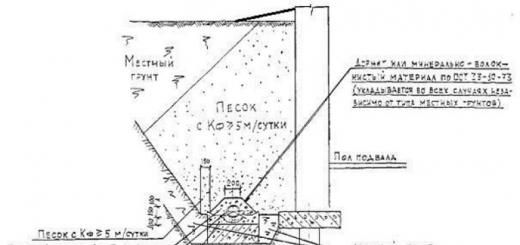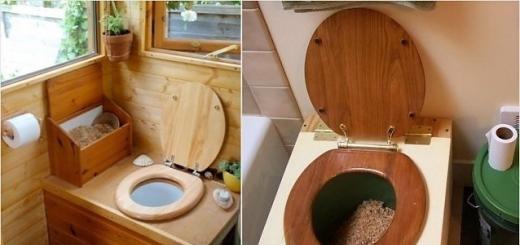Remmers Restauriermortel.
(previously called Funcosil Restauriermortel)
Article 0748-0769, 0789.
Technical description.
Ready-to-use, factory-made dry mix.
Binders and additives exclusively based on mineral raw materials.
Scope of application:
Remmers Restauriermortel is excellent for restoring damaged sandstone masonry and architectural elements, figures, balusters, etc. When working with the casting method, use Remmers Restauriermortel Gf (art. no. 0588-0590). Remmers Restauriermortel can also be used for restoration brickwork shades of sandstone and brick, which are usually found in practice in various colors, can be selected in the factory in accordance with the selected sample. Thanks to the different processing techniques of Remmers Restauriermortel, as well as the consistency of the mixture used, it is possible to carry out work on the restoration of exposed concrete and the installation of cornices.
Can also be used for sealing seams. When filling narrow joints type SVV. For machine processing for 30 kg of dry mix, take 12 ml of Remmers Michol.
Product properties:
Remmers Restauriermortel is a ready-to-use, factory-made dry mix (binders and additives) based on mineral raw materials. physical characteristics of the product meet the requirement of the lowest possible internal stress, the product has the physical and mechanical properties necessary for natural stone bases (compressive strength and adhesion strength, water absorption, etc.).
Remmers Restauriermortel is part of the Remmers Restauriermortelsystem (with two levels of strength; n = normal strength, article 0769, w = low, reduced strength, article 0789) and thus complies with the requirements of Prof. Snetlage's stone preservation principle.
The grain size of additives in most cases corresponds to fine-grained sandstone. Various modifications are possible (large and small grains) depending on the specifics of the base.
Corn:
petty<0,2 мм;< />
average<0,5 мм;< />
large<2,0 мм.< />
Bulk weight:
approx.1.7kg/l
in 28 days<13Н />
Compressive strength: after 28 days<8Н/>
Compressive strength(small-w): after 28 days> 1N/mm2
Adhesion strength: 103 N/mm2
Modulus of elasticity (Young's modulus) according to DIN1048 (n/w): after 7 days approx.-0.3mm/m
Shrinkage strain DIN52450: after 28 days approx.-0.7mm/m
Colors:
0750 white
0751 ocher
0752 rotbrown - red-brown
0753 turkisgrau- turquoise gray
0754 baumb sandstein - sandstone
0755 gelbgrun - yellow-green
0756 beige
0757 ziegelrot - red brick
0758 hellbeige - light beige
0759 anthracite
0760 marl
0761 hellgelb - light yellow
0762 buntsandstein - variegated sandstone
0763 ziegelorange - orange brick
0764 creme
0765 gray
0766 hellgrau - light gray
0769 sonder farbton - other shades
Processing:
The basis for working with Remmers Restauriermortel is a base that has a load-bearing capacity (stabilization of the strength of the base over the entire surface). This can be achieved by pre-cutting the stone and strengthening it, if necessary in combination with a Remmers Antihygro treatment.
During restoration:
Surfaces of historical significance, for which pre-hewing of the base may lead to loss of pattern, if necessary, should be prepared by impregnating natural stone with Remmers stone stabilizer. The exact sequence of actions depends on the specifics of the object.
Foundation preparation - stone cutting:
In areas of the surface to which Remmers Restauriermortel is to be applied, notches or notches are made at an appropriate angle with a flat chisel or cut-off wheel. Damaged, destroyed surfaces must be cleaned to an undamaged stone. Edges should not be ground to zero. Only for strongly protruding building elements such as cornices, etc. should be pre-reinforced with reinforcement in the form of plastic or steel dowels with a star-shaped head. Reinforcement can also be made with plastic dowels fixed with Remmers BH-100.
Application of Restauriermortel restoration mixture:
Before applying Remmers Restauriermortel, especially for deep voids, one or more coats of Remmers Grundiermortel primer must first be applied. The areas to be completed must first be blown out with compressed air, moistened well (preferably the day before) and sludged with liquid Remmers Restauriermortel (approx. 1 liter of water per 5 kg of mixture). On a freshly slurry surface, immediately apply Remmers Restauriermortel in a plastic consistency (approx. 750 ml of water per 5 kg of mixture) 1-2 mm above the existing masonry.
Stone processing must be carried out according to the markup. Lightly set Remmers Restauriermortel mortar with a sponge rubber disc or a special wooden tool and after 3-4 hours roughen the surface to a “natural stone effect”. Experience has shown that it is best to apply Remmers Restauriermortel in layers with a maximum thickness of 3 cm.
Thin layer application along the edge of damaged areas can be facilitated if necessary by adding Remmers Haftemulsion to the sealing water (ratio 1:4); the hardening time is thus increased, the adhesive strength is increased.
Sequence of working operations:
Example of a workflow for a restoration by chiselling with Remmers Grundiermortel and Remmers Restauriermortel products:
1. Draw a rectangle around the loss using a hard pencil or diamond scriber on stone.
2. Make corner cuts or cuts around the damaged areas to a depth of approximately 0.3 cm.
3. Remove loose and damaged elements over the entire surface of the damaged areas marked with notches.
In the presence of deep voids or strongly protruding building elements:
4.Drill holes approximately 8 mm deep in voids more than 3 cm deep, as well as on the lower surfaces and drips of cornices and ledges around the perimeter at a distance of 5-8 cm.
5.Insert the plastic dowels into the pre-drilled holes with compressed air.
6. Screw corrosion-resistant screws into the inserted dowels. The distance from the base should be approx. 1 - 1.5 cm. (Brass screws are not resistant to corrosion. It is recommended to use V4A stainless steel screws with sizes 5/50 and 5/60.) When using dowels with a star-shaped head, points 5 and 6 fall out.
7. Thorough cleaning of dusty substrates should be carried out using high-pressure water jets.
8. Moisten damaged areas. Sludge immediately with Remmers Grundiermortelschlamme, liquid-plastic consistency.
9. Apply Remmers Grundiermortel primer mixture of thick plastic consistency to freshly slurry voids, but not more than 2 cm in one working pass within 24 hours.
Processing must be carried out according to the marking of the stone. For multi-layer application, after the first layer has completely dried, treat it to a rough state and moisten. Re-slurry with a layer of Remmers Grundiermortel in a liquid-plastic consistency and again apply a second layer of Remmers Grundiermortel in a thick-plastic consistency.
10. Approximately 2-6 hours after application, or depending on the weather conditions, when the granulate comes out, treat the surface coated with Remmers Grundiermortel mixture so that the protruding elements are 3-5 mm below the front surface. 11.After 24 hours, moisten the areas to be restored.
12.Slurry with liquid Remmers Restauriermorte.
13.Apply Remmers Restauriermortel in thick plastic consistency (as described for Remmers Grundiermortel in points 9 - 10), approx. 2 mm above the front surface.
14.Consolidate the applied layer of Remmers Restauriermortel with gentle movements using a sponge rubber disc or a special wooden tool. Do not use a metal trowel!
15. Wipe the applied layer with careful movements and compact along the edges.
16.Install a scraper or scraper to properly finish the surface around the voids.
17. Process the areas covered with the mixture according to the texture of the entire surface of the masonry, e.g. sandstone effect.
18. Carefully sweep the restored area with a soft brush.
19.Clean the joints between the natural stone and the restoration mixture from residual sludge using water or a sandblast gun.
20. Wet repeatedly all restored areas over the next 14 days.
21. After 3-4 weeks after the restoration of the masonry, all damaged natural stone masonry can be strengthened with Remmers Steinfestiger (depending on the specifics of the object).
22. If necessary, it is possible to adjust the restored area in terms of color and texture using Remmers Historic Lasur (water-repellent azure) or using silicate-chalk technique (System Bohringer).
23. Apply long-term protection against rainstorms and harmful atmospheric agents dissolved in water with Remmers impregnating products.
Instruction:
Seizure must be controlled especially carefully in the warm season. It is necessary to wet the restored surface at least 2 times a day for the first four days to avoid drying out of the mixture. Good results are obtained by a proven method - hanging the restored areas with wet burlap.
Then (observe process breaks) color matching can be done with Remmers Silicofarbe or Remmers Historic Schlammlasur / Remmers Historic Lasur. As a preventive protection of masonry, at the end of the work, the entire object is hydrophobized with Remmers Impragniermittel products.
Along with the article number, each order must contain the desired strength and grit size, as shown in the example:
Strength: N
Grain: 0.5
Colour: 069
The color number can also be specified, or the color can be matched at the factory in accordance with the sent sample. Always send a sample!
Tool, cleaning:
Wide brush, trowel, spatula, sponge rubber disc, scraper, stone cutter, high pressure water jet cleaner, compressors, etc.
Clean tools immediately after use with water.
Safety, environmental safety, waste management:
More detailed information regarding safety during transport, storage and use, as well as information on disposal and environmental safety, can be found in the current safety data sheet.
Delivery form, consumption, storage conditions:
Delivery form:
Paper bag 30 kg
Product consumption:
Approx. 1.8 kg of mixture per liter of voids (n) or approx. 1.3 kg (w)
Consumption depends on the thickness of the applied layer.
Product storage:
In closed original packaging, in a dry place - at least 1 year.
PKR 4 gray mixture is a special high-quality cement-lime based compound with chemical additives and mineral aggregates.
The mixture was developed with the participation of professionals involved in construction and restoration for over 40 years in many cities of our country. With its help, cultural monuments, temples and other historical sites were restored. The composition contains such components as cement, lime, sand, marble flour, special additives.
Designed for restoration and masonry work inside and outside the premises.
PKR 4 mortar has good adhesion to concrete and brick substrates, which must first be cleaned of dust, dirt, grease, oil. The surface of the base must be clean and necessarily rough (if necessary, make it rough). Dirt must be removed mechanically. During work in the winter, the masonry material should be cleaned of ice and snow. The surface should be well moistened before applying the solution.
The solution is prepared as follows: the dry mixture PKR4 is poured into a tank with clean water and stirred manually or mechanically (construction mixer, electric mixer) until a homogeneous mass without lumps is obtained. The prepared solution should be applied within 1.5 hours.
Vapor-permeable mineral solution has strength up to 10 MPa, application temperature from + 5°C to + 35°C. The size of the filler is not more than 1 mm and the density is 2 - 2.2 t/m3.
The average consumption of the mixture is from 20 to 25 kg per 1 m2 with a layer thickness of 10 mm.
The mixture is stored in its original packaging in a cool, dry place - no more than 1 year.
One of the basic elements in construction are the so-called mortars. They are a mixture consisting of a binder, aggregate and water. Unlike concrete, fine-grained aggregates are used in mortars: sand instead of crushed stone or expanded clay.
The binder component of the solution can be cement, lime or gypsum: the physical and mechanical properties of the mixtures depend on this. Depending on the purpose of the solution are used and different types placeholders. So, when creating massive structures, denser compositions of heavy with large grains (0.5-2.5 mm) are suitable as masonry mortar. To create light plaster mixtures (density less than 1500 kg / m 3), fine-grained aggregates from slag, pumice and other materials are used.
It is easy to order dry lime, cement and mixed mixtures in Moscow and any other city: leave a request on the website and we will take care of the prompt delivery of the material in the right quantity to any address. The price depends on the type of product, manufacturer, volume of purchases.
Dry mixes: classification by binder
On sale there is a large selection of both simple and mixed mixtures. Simple solutions include solutions in which one binder component is used, mixed (complex) solutions, which include two or more components. Mixtures are selected taking into account the characteristics of their hardening, as well as the purpose and operating conditions of buildings and structures under construction.
The catalog of the online store presents a range of:
- simple cement (a binder is a variety of Portland cement);
- simple lime (manufacturers offer mixtures of air and hydraulic lime);
- simple gypsum (they use building gypsum or the so-called anhydrite cement obtained from gypsum stone);
- mixed, the basis of which is a cement-lime mixture, lime-gypsum or cement-clay composition.
Recently, pure modified sulfur has been increasingly used as a binder for solutions. The sulfur product causes increased interest due to a number of advantages (hydrophobicity, bactericidal properties, good binding abilities), excessive quantity and low price. At the moment, sulfur is used for the production of sulfur cement (mastic). There are a number of reasons to buy such material; it is distinguished by its high strength, water resistance and frost resistance. Sulfur mixtures are used for laying bricks, tiles, cutting joints and protecting building structures from the action of various acids. They have high strength, frost resistance, water resistance. Another plus of sulfur cement is good adhesion to metals.
Complex cement-lime mixtures are kneaded in order to impart desired technical properties (for example, to slow down hardening) and/or to reduce the cost of the composition. Additives are called plasticizers (surfactants). There are organic and inorganic plasticizers (for example, lime and clay are not only binders, but also inorganic plasticizers). Plasticizing additives generally affect the price of mixtures (they allow saving binder components), and the use of organic plasticizers can also reduce the material consumption of mortar production.
Pros and cons of different types of solutions
Cement-sand repair dry mix is one of the most versatile materials. It has a lot of advantages: high strength, resistance to high and low temperatures and moisture. But there are also disadvantages: low plasticity and not the best adhesive properties. To eliminate these disadvantages, various additives, including polymer ones, are included in the compositions that can be bought today.
Dry cement-lime sand mixture has also found wide application. Features of lime repair plaster resistance to cracks and biological attack (treatment with such compositions prevents the appearance of fungus). Among other advantages of the mixture is plasticity, good adhesion to wooden surfaces, affordable price. Lime modification freezes over long time which can be both a plus and a minus. Compared to the "pure" cement analog, the strength of such a coating is somewhat lower.
Types of mortars by purpose
The selection of the repair mixture is carried out taking into account the scope of use. Mostly cement and mixed plaster compositions are used for leveling and finishing surfaces. Specialists distinguish compositions for masonry and installation work, finishing mortars for plastering and creating various decorative elements (layers), as well as special mixtures with special properties. The latter are intended for use in specific construction industries and in buildings with increased requirements.
- With the help of masonry mortars, stone, brick, blocks are laid. To buy the "right" mixture, it is important to take into account the operating conditions of the facility: for simple ground structures, more economical compositions are selected, for structures that will be in an aggressive environment, more expensive ones (mixed options with special additives). When installing panels and large blocks, high-quality Portland cement mortars of high grades are used. The choice of brand of cement mortar also depends on the weather conditions of masonry and installation, for example, in winter it is recommended to use heavier and more durable mortars. In masonry mixtures, aggregates with a grain size of up to 2.5 mm are used.
- Stucco dry mix is characterized by the use of finer aggregate (fine sand). Various materials can be used as a binder here. So, for outdoor work, it is often recommended to buy cement mortars (in order to increase resistance to atmospheric manifestations, they include special additives, for example, that improve water resistance). The cement-lime mixture is quite in demand, which makes the plaster more plastic. Such solutions are used both indoors and outdoors. Due to lime, the hardening time of the composition increases, which can be corrected with gypsum. In plaster mortars, the maximum allowable aggregate grain size is 2.5 mm (starting work) and 1.25 mm (covering layer).
- To separate species include protective and decorative plaster, which is available both as a dry mix and in the form of pastes. In the composition of solutions intended for external use, Portland cement (with additives) is usually used as a binder. For interior work, a lime-sand mixture is often used, usually with the addition of gypsum. Lime mortar is very plastic. A crumb of various rocks can act as a filler, and pigments, such as ultramarine or graphite, are added to the coating to give color.
Depending on the proportions of binder and aggregate, sandy plaster and masonry mixture can be "fat" and "skinny". The more sand aggregates, the poorer the solution, however, when plastering, such solutions give the least shrinkage.
The actual cost of dry mixes is always indicated on the pages of the catalog (questions regarding the selection, delivery, price and payment can be asked to our manager). Dry materials are sold in waterproof bags of various sizes (4, 5, 20, 25 kg and other packages). The advantages of dry packaging over "wet" solutions are ease of transportation and storage.
Standard mix ratios
Our store provides an opportunity to buy ready-made dry mixes for masonry or plasters. Before use, it is enough to dilute them with water in the proportion indicated in the instructions. The formulation of solutions from different manufacturers and in formulations for various purposes has some differences (information about this is also on the labels). We give only examples of the most common options:
- Standard plaster cement-lime-sand mortar, which is used for interior decoration, is made in proportions of 1:1:6 or 1:2:9. The first digit is cement, the second is milk of lime, the third is sand. To ensure faster solidification (hardening) of the finished mixture, 1 part of gypsum can be added to 5 parts of lime mortar.
- The traditional "recipe" for lime dough is 1 part lime + 3 parts water.
- For plastering exterior walls, you can use a simple mixture of cement and sand (proportion 1:3 or 1:4).
The most suitable for a cement mixture is river. There are a lot of salts in sea sand, and in mountain clay (this solution is good for plastering stoves).
To obtain a high-quality cement or mixed material, it is necessary to combine all the components until homogeneous (the best option is with a mixer). The consistency may vary depending on the requirements and features of the job. For plaster, the most convenient consistency is thick sour cream (the recommended thickness of the plaster layer is indicated in the instructions), while for masonry and installation work it is recommended to knead a thicker solution. The finished material is applied according to the technologies of "spreading" (using a spatula or trowel) and "throwing" (using a bucket), a mechanized method can also be used.
Buy lime mixtures at manufacturer prices
To buy dry cement, sulfur and lime, contact us at any time by phone or through the website.
The material "Restorer lime masonry mortar" is a dry, ready-to-use mixture based on lime with the addition of modifying additives (which do not affect the vapor or gas permeability of the hardened mortar) and fractionated sand.
Scope of material:
- masonry works ceramic brick;
- performance of masonry work with silicate bricks;
- performance of masonry work when working with stone blocks; - for external and internal works.
- can be used to recreate buildings and structures.
Material advantages:
- eliminates the formation of efflorescence on the surface of stone or brickwork
- high vapor permeability
-high resistance to biological degradation
Foundation preparation:
The surface of a brick or stone block must be dry and sound. The product must have good absorbency, must be free from any kind of contamination (cleaned from dust, dirt, oil stains, previously used finishing materials). "Old" masonry elements are allowed for reuse only if they are structurally sound and restored to their correct shape.
Preparation of materials for work:
Prepare the material for work by mixing the dry mixture with clean tap water. Mixing is carried out mechanically using a mixer or a drill with a special nozzle. Both options for adding water to the material are allowed:
1) the dry mixture is poured into a container that contains a pre-measured amount of water;
2) Water is poured into a container into which the dry mixture has already been poured.
The material should be mixed until a homogeneous mixture without lumps is obtained. After the first mixing (5-7 minutes), you should maintain a technological pause (5-7 minutes) and re-mix the mixture for 2-3 minutes. For mixing, use water at room temperature. The amount of water is determined in the conditions of the construction site with the selection of the most convenient material consistency for work.
Material application:
Before laying the first course of masonry or masonry, apply the mortar to the existing substrate and to the contact edges of the bricks or stone blocks. Apply the solution in a layer - 10-15 mm. Lay a brick or stone block in the mortar laid on the base and level it. Remove excess mortar mixture. Subsequent rows are laid similarly. Every 5 rows, the masonry should be reinforced by laying a metal mesh or reinforcing bars in the mortar mix. The height of the reinforced joints must be at least 18mm, the thickness of the reinforcement - no more than 5mm.
Material care:
The surface of the material must be protected from direct sunlight or drafts. Also, the material should be provided with temperature and humidity care similar to the care of young concrete: cover with a film, moisten 2-3 times a day. Duration of care - 7 days.
Security measures:
The work must be carried out in rubber gloves, which corresponds to the safety of plastering work. If the composition gets on the mucous membranes of the eyes and respiratory organs, rinse them well with water.
Storage:
In a dry place on a wooden pallet - up to 12 months
Delivery form:
Bag 25kg.
Spasskaya D.K., Sarro R.A.
The surface of the masonry of ancient monuments is destroyed to some extent over time. The degree and nature of the destruction of each individual fragment or the entire masonry is due to a number of reasons: climatic conditions, organic defects in ancient materials, technology deficiencies, design and operational shortcomings, etc. In all cases of large and small losses of brick and stone on the surface of the masonry, the question arises to save it from further destruction.
Depending on the task at hand, when working on each specific monument, the method of preserving the masonry may be somewhat different, namely: 1) the masonry can be preserved in its current position with the help of various impregnating and strengthening agents of modern chemistry; 2) large and small losses can be restored by sealing them with mortars, followed by surface treatment with organosilicon hydrophobic compounds. Both methods are preceded by a corresponding rejection of brick and stone on the basis of the expediency of leaving them in the original masonry.
But regardless of the method chosen, all new materials (chemicals, mortars), mounted in masonry in one way or another, should not violate the established mode of vapor and moisture exchange and temperature deformations in the brick (stone) - mortar system.
Thus, quite stringent requirements are set for all new materials introduced into the masonry. In order to comply with these requirements, it is necessary to clearly understand the main characteristics of those ancient materials in direct contact with which new ones will have to exist, representing together a single whole, monolithic and durable.
In addition, new materials, meeting the set requirements, should not spoil the appearance of the monument, i.e., violate the integrity of its aesthetic perception as a work of art of the people.
The existing practice of restoration work uses mortars based on mineral binders to restore losses in brick and white stone. Unlike new construction, where cement is widely used as the main binder, restoration practice allows cement in minimal quantities as an additive to lime mortar. Solutions on cement have increased strength and density, but give efflorescence. The use of cement in masonry or plaster mortars leads to the destruction of ancient materials due to the violation of vapor and moisture exchange in the masonry. There are quite a lot of similar examples in the restoration practice of past years - the destruction of brick under a layer of continuous cement plaster, brick and stone with too tight mortar joints, etc.
Ancient monuments are built on lime mortars with various additives of organic and inorganic origin. These mortars have withstood the test of time, but modern lime mortars are, unfortunately, still too weak.
In order to improve the performance properties of lime mortars, without prejudice to ancient materials, the restoration practice of today includes lime mortars with additives of cement (20-50%) and polyvinyl acetate emulsion (5-10%). This composition gives quite good results.
The successes of modern polymer chemistry in various industries, in particular in construction, have attracted attention from the point of view of their application in restoration practice. The possibility of creating sufficiently strong and durable polymer-based compositions for the restoration of brick and masonry is of particular interest, provided that their basic properties comply with all the requirements for restoration compositions. The experience of developing such compositions was started by the All-Union Scientific Research Institute of Building Polymers in close cooperation with the laboratory of the VPNRK. (now the All-Union Specialized Production Association "Soyuzrestavratsiya") in 1973 and continues now.
The developed composition is intended for the restoration of brick and masonry ancient sites located in the temperate climate zone, in particular in the Moscow region and adjacent areas.
The development of the composition was preceded by a detailed study of the properties of ancient materials - brick and white stone, samples of which were presented by the laboratory of the VPNRK. Brick from the 17th century monument was taken as the basis for the selection of the appropriate composition. - the Church of the Trinity in Konkovo - as the most typical in terms of raw materials and manufacturing technology.
Since the cost of a polymer-based mortar is much higher than that of mineral binders, a proposal was made to explore the possibility of joint use of the developed polymer composition and the usual restorative composition of VPNRK in order to restore large losses in masonry with a cheaper composition of VPNRK, and the top layer, decorative - the composition of the All-Union Research Institute of Building Polymers.
Thus, research was carried out simultaneously in two directions: 1) ancient brick + polymer composition; 2) ancient brick + VPNRK mortar + polymer composition.
The VPNRK laboratory prepared samples of a mortar based on lime with the addition of cement (10–50%), a polyvinyl acetate emulsion (10–20%) modified with one or two percent ethyl silicate, a PVAE emulsion to make it more water resistant, and with a filler - sand in a ratio of 1 :four.
The technique for developing the polymer composition consisted in studying the main properties that determine its suitability for restoration. Tests were carried out on samples (cylinders, prisms and plates) made of ancient material, a solution of HPNR and a polymer composition.
In accordance with the methodology of the All-Russian Research Institute Stroypolimer, the samples were tested separately by type of material and in combination with each other. First of all, porosity, moisture and vapor permeability, temperature deformations, strength and deformability of the mortar-brick system were determined.
The results of the study on the main, defining properties showed:
Maximum temperature deformations ( E: 10 -3 cm) in the temperature range from -10 to + 50 ° C has a polymer composition, solutions of VPNRK occupy an intermediate position between the ancient brick and the polymer composition.
Shear (separation) tests of the brick-mortar system showed its sufficient strength and deformability.
Thus, according to the results of these tests, the polymer composition in combination with ancient bricks and solutions of VPNRK, with each separately and with both together, is quite compatible.
The issue of weather resistance and durability of compositions in the brick-mortar system was solved on samples imitating fragments of restored masonry (ancient brick-a layer of mortar of VPNRK-a layer of polymer composition), using a climate chamber according to the regime of Moscow and the Moscow region, i.e. for a temperate climate according to table of the Hydrometeorological Service (the table given is for one year of operation):
As a result of all the studies conducted by the All-Russian Research Institute Stroypolimer, and in accordance with the calculated heat engineering standards, more specific requirements for restoration compositions for bricks were formulated, namely:
1) the difference in temperature deformations of brick and mortar should be within the limits of the deformability of the restoration composition at the maximum annual temperature difference. The coefficient of thermal expansion should be within 1.5–5.10 -6 1/deg;
2) vapor permeability may be greater, but not less than that of masonry, and should be within 1.8–2.10 -2 g/(m.h);
3) porosity must be equal to or greater than the porosity of the restored material, in this case (ancient brick from Konkovo) about 32%;
4) the safety of the composition in a temperate climate zone is determined at 30 years (tests in a climatic chamber).
When developing the formulation of the optimal composition, in addition to the above indicators, the time of the working state of the composition, determined by the viscosity required for installation, the timing of the acquisition of dimensional stability by the composition, and the period of complete curing were taken into account. The fat content of the composition was studied in the range (1: 1) - (1: 4), as well as methods for preparing the surface before laying the mortar.
As a result, the first version of the restorative composition was developed with the following recipe, in parts by weight:
ED-5 resin ............................................... 100
resin KO ................................................ .ten
polyethylenepolyamine ...............................10
filler (ground brick)............400
This composition for experimental verification was laid in a small fragment of the wall of the Novospassky Monastery Cathedral. The first full-scale experiment showed insufficient manufacturability of the composition and required improvement in terms of increasing plasticity.
As a result, the optimal (at this stage) version of the composition of the following formulation was obtained.
For bricks: ED-5 resin - 100% by weight, KO resin - 10% by weight, diluent (DEG-1 resin) - 15% by weight, polyethylene polyamine - 18% by weight, filler - ground modern brick (fractions 1 - 2 mm) and crushed limestone (fractions up to 2 mm). Brick and limestone are taken in a ratio of 2.5: 1; fat content 1:4 (by weight).
For white stone: ED-5 resin - 100% by weight, KO resin - 10% by weight, thinner (DEG-1 mill) - 15 parts by weight, polyethylenepolyamine - 18% by weight, filler - ground limestone (up to 2 mm) , titanium white (TiO 2) -2% by weight of the filler; fat content 1:3 (by weight).
These compositions are also placed in wall fragments for field testing. In addition, in the summer of 1975
VNII Stroypolimer and VPNRK carried out full-scale work to restore a large fragment (about 10 m 2) of the brickwork of the monument of the 17th century. - civil chambers on Kozhevnicheskaya street, 17. VONRK solutions were used during the work. and decorative polymer composition VNII Stroypolimer.
The indicated variants of the compositions are not final, their samples, as already mentioned above, undergo full-scale testing. Durability and ample opportunity to vary the color of the solution within the different-colored bricks of ancient masonry due to the use of crushed bricks of different shades make these compositions quite promising. Further development of the recipe is underway in the direction of reducing the cost of the compositions and simplifying the technology of preparing and mounting them in the wall. Ahead is the development of small-scale mechanization of installation work and introduction into production, as well as mathematical processing of the results of laboratory studies, the derivation of general patterns for obtaining compositions with predetermined properties, and the preparation of instructions for the use of these compositions.










